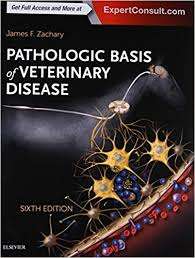-

- |
- Accueil
- |
- Livres
- |
- Revues
- |
- Thèses
- |
- Patrimoine
- |
-
Ressources
Autres écoles vétérinaires
-

- |
- Accueil
- |
- Livres
- |
- Revues
- |
- Thèses
- |
- Patrimoine
- |
- Ressources

Pathologic basis of veterinary disease | 6th edition

St-Louis
2016
1837 p.
9780323357975
H-06-00-17C
Pathologie ; Médecine vétérinaire ; Anatomopathologie ; Animal domestique
Url / Doi : https://vet-alfort.idm.oclc.org/login?url=https://www.vleboo...
Type de fond : Fonds dématérialisé